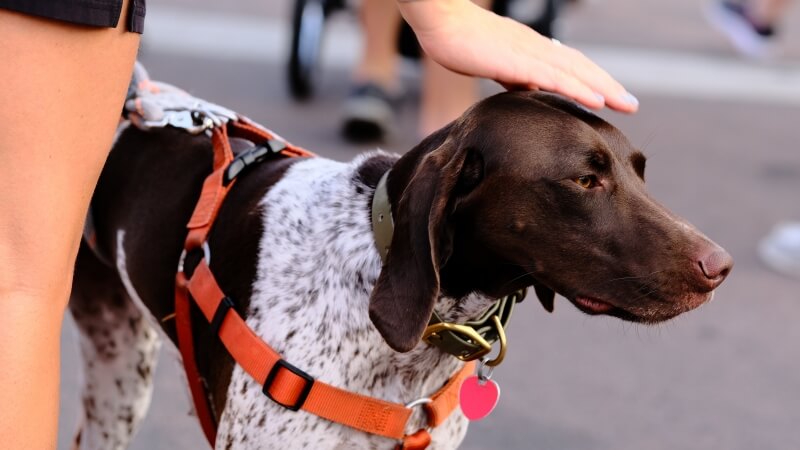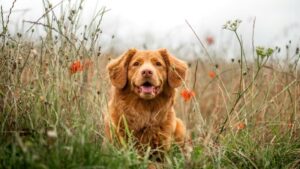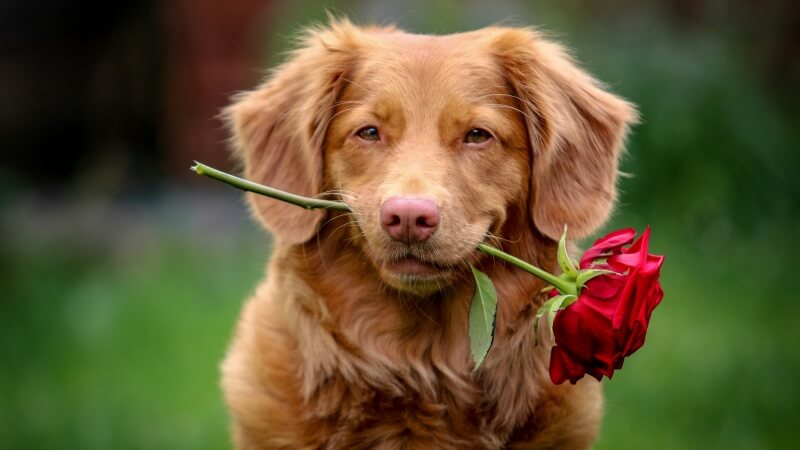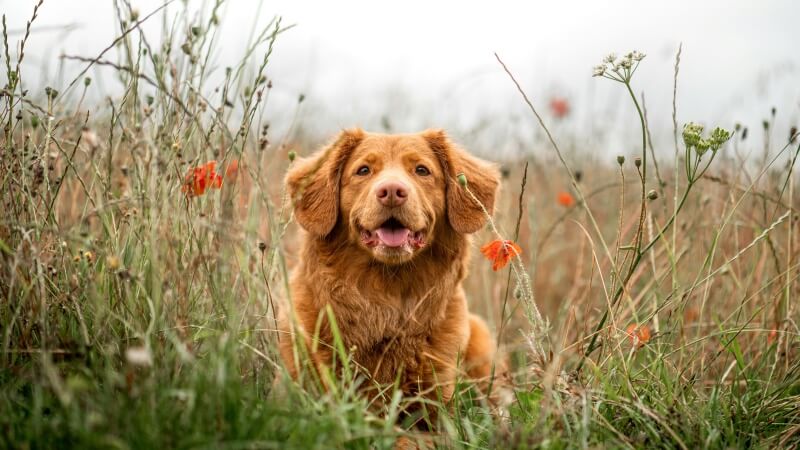
How To Craft A Cozy Cat Vest From Fabric Strips
Have you ever seen your feline friend lounging around and thought, “What could possibly make this picture more adorable?” The answer is simple: a cat

Did you know that learning how to put a dog harness on can significantly enhance your pet’s safety and comfort? Traditional collar and leash combinations can pose risks of neck injuries for dogs. A sudden jerk on the leash might cause whiplash, bruising, and even severe damage like crushed windpipes or fractured vertebrae.
Certain breeds, such as Chihuahuas, Pomeranians, Shih Tzus, Lhasa Apsos, Toy Poodles, and Yorkshire Terriers, are especially prone to trachea collapse. Often, pet owners unintentionally inflict these injuries without realizing the harm caused by collars.
A much safer alternative is a dog harness. Harnesses distribute pressure evenly across the dog’s body, reducing strain on the neck. They should be snug but comfortable, ensuring security and comfort for your pet.
Harnesses also offer owners better control, minimizing the risk of the leash tangling in the dog’s front legs. Transitioning to a harness might require patience, as some dogs need time to adjust, often eased with treats and encouragement. Various harness designs cater to different sizes and needs, including those for dog sports.
We offer an array of harnesses suitable for any dog size and activity. This guide aims to provide detailed steps to correctly fit a dog harness, ensuring both safety and comfort for your canine companion.
When considering how to put on a dog harness, it’s essential to explore the various types available for your furry companion. Harnesses are designed to secure around a dog’s main body but can vary in style and fit. Popular options include back-leash clip harnesses with a D-ring for leash attachment, allowing dogs to step in effortlessly with their front legs.
Before fitting a harness, determine whether it fits over your dog’s head or under its front legs. This knowledge can significantly reduce the stress for both you and your pet.
Here’s a look at the primary dog harness types:
A dog harness must be snug enough to prevent your dog from slipping out, yet it should also be comfortable, ensuring your dog isn’t experiencing any discomfort.
Why might a dog be uncomfortable with its harness? Often, it’s the lack of padding. A superior harness, though not the cheapest option, provides ample padding where it’s needed most.
A useful tip is to check if you can slide two fingers under all the harness straps, including the belly area. This ensures your dog’s comfort. After all, just as you wouldn’t prefer wearing something too tight, neither would your dog!
How can you ensure your dog’s harness is safe? Gently attempt to pull the harness over your dog’s head, doing so slowly and with care to avoid distress.
If the harness slips off, it’s unsafe and requires adjustment. Why is this important? If a dog pulls on the leash and the harness isn’t secure, there’s a risk of injury or the dog getting lost.
With various styles of dog harnesses available, each requires a distinct method of fitting to your dog. But, how exactly do you put on a dog harness?
For smaller breeds, a fashionable dog harness in various colors and designs can be a stylish choice. Ever thought about matching your dog’s harness with your own fashionable attire?
Here’s how to properly fit your dog with a fashion harness:
Is a step-in harness suitable for you as a new pet owner or if you have mobility challenges? This type of harness allows you to easily place it under your dog’s legs.
Follow these steps for fitting a step-in harness:
Did you know a no-pull harness is often the simplest type to fit? It doesn’t require lifting your dog’s legs as it easily goes over the head and fastens with side buckles.
Here’s how to quickly fit a no-pull harness on your dog:
Rear-clip harnesses are often chosen for calm dogs to reinforce good walking behavior. The rear leash attachment offers dog owners ease in guiding their pets while maintaining a relaxed posture.
Here are the instructions to properly equip your beloved dog with a rear clip harness:
A front clip harness is well-suited for larger dogs.
Here are the essential steps for fitting a front clip harness on your dog:
A custom-fit dog harness features an adjustable design and premium fabric, ensuring a perfect fit for your pet.
Here are the steps to follow when adjusting this harness for your dog:
A step-in harness allows you to guide your dog into the harness through the leg openings.
Here are the steps for fitting a step-in harness on your dog:
Keep your adventurous pet involved in all your outdoor activities! Utilize the Rover outdoor adventure harness, paired with a Rover hiking belt, to enjoy joint expeditions with your dog.
Here are the key steps for utilizing an adventure harness:
To select the ideal harness for your dog, you must take three specific measurements. Remember to leave room for two fingers under the tape measure for each measurement.
Chest
Measure your dog’s chest at its broadest point to determine the chest strap size. This is typically around the girth, below the dog’s shoulders.
Measure both the upper part of the neck, where a collar would fit, and the lower neck, where the harness rests. This dual measurement is crucial because when the dog pulls, the harness shifts lower, and you want the neck area to be comfortable to prevent choking.
Take a measurement of your dog’s body length, covering the fur. This ensures the harness will appropriately cover his body.
With these measurements, you are now equipped to find the perfectly fitting harness for your wonderful dog!
So, is it better to opt for a harness or a collar for your dog? Or perhaps consider using both a harness and a collar together?
A harness offers protection against neck injuries for your dog. When your dog pulls, the force exerted by the leash is evenly distributed across the shoulder blades and chest rather than the neck. The main body of a dog is more robust than its neck, making this distribution more beneficial.
Certain dog breeds prone to tracheal collapse, such as Chihuahuas, Pomeranians, Shih Tzus, Lhasa Apsos, Toy Poodles, and Yorkshire Terriers, should definitely opt for a harness instead of a collar for walks.
Safety-wise, if a dog wearing a harness gets caught, the risk of choking is significantly reduced. A tangle around the chest is far less hazardous than around the neck.
There are various styles of harnesses available. We offer a wide range of harnesses to suit dogs of all sizes and owners’ preferences.
Using a collar for leash attachment is not ideal for many dogs. Pulling the leash can exert excessive pressure on their neck and trachea, potentially causing whiplash, fractured vertebrae, breathing issues, and in severe cases, strangulation due to entanglement.
Certain dog breeds, such as Greyhounds, Whippets, Salukis, and other breeds with slim heads and necks, are prone to having collars slip off due to their head and neck being similarly sized. For these breeds, a harness is a safer choice.
Nevertheless, combining a collar without a leash alongside a harness can be beneficial. A collar, like Neewa’s sport collar, can be stylish and serve as an identification tool. Engraving your contact details on the collar tag and attaching rabies vaccination information is advisable, especially in case your dog ever goes missing.
Harnesses, when correctly fitted, are the safest and most comfortable choice for leash attachment on your dog.
However, a harness that doesn’t fit well can be as detrimental as a collar, so ensuring accurate measurements for your pup is crucial for that perfect fit.
Learning how to put a dog harness on is straightforward with the steps we’ve outlined previously. If your dog seems reluctant to wear the harness, invest time in positive reinforcement training for a smoother process.
We provide an extensive selection of dog gear, offering a variety of harnesses suitable for any occasion.
FAQ: Can a dog wear a harness all the time?
While harnesses are safer than collars for walks and activities, it’s not recommended for a dog to wear a harness constantly. Continuous wear can lead to skin irritation and discomfort, especially in areas where the harness rubs against the skin. It’s best to remove the harness when your dog is indoors or not on a leash.
FAQ: How do I introduce my dog to a new harness?
Introducing a dog to a new harness should be a gradual and positive experience. Start by letting your dog sniff and examine the harness, rewarding them with treats. Gradually place the harness on your dog for short periods, continuing with treats and praise. Increase the duration gradually until your dog is comfortable wearing it for extended periods.
FAQ: What are the signs that a harness is too tight or too loose?
A harness that’s too tight may cause chafing, hair loss, and difficulty breathing. Signs of a loose harness include your dog easily wriggling out or the harness shifting position excessively. Ensure you can fit two fingers under each strap, and the harness stays in place without causing discomfort.
FAQ: How often should I check and adjust my dog’s harness?
Regularly checking and adjusting your dog’s harness is crucial, especially if your dog is still growing or has fluctuations in weight. A monthly check is a good practice, ensuring the harness still fits comfortably and securely.
FAQ: Are there any harness types specifically for dogs with mobility issues?
Yes, there are harnesses designed for dogs with mobility issues, such as those with supportive handles and additional padding. These harnesses provide extra support for dogs with arthritis, injuries, or other conditions that affect mobility, making it easier for owners to assist their dogs during walks or when navigating obstacles.


Have you ever seen your feline friend lounging around and thought, “What could possibly make this picture more adorable?” The answer is simple: a cat

The moment you consider a dog hunting vest for your adventurous companion, you’re stepping into a world where safety meets functionality. This vest is not

The concept of a dog cooling vest is a game-changer for pet owners looking to enhance their dog’s comfort during those relentless summer days. Imagine

When you first consider crafting a tactical dog vest, it’s not just about embarking on a fun DIY project; it’s about ensuring your furry companion’s

Have you ever seen your feline friend lounging around and thought, “What could possibly make this picture more adorable?” The answer is simple: a cat

The moment you consider a dog hunting vest for your adventurous companion, you’re stepping into a world where safety meets functionality. This vest is not

The concept of a dog cooling vest is a game-changer for pet owners looking to enhance their dog’s comfort during those relentless summer days. Imagine

When you first consider crafting a tactical dog vest, it’s not just about embarking on a fun DIY project; it’s about ensuring your furry companion’s
Secure and Empower, Walk Responsibly
Copyright © 2025pettacticalharness. All Rights Reserved.